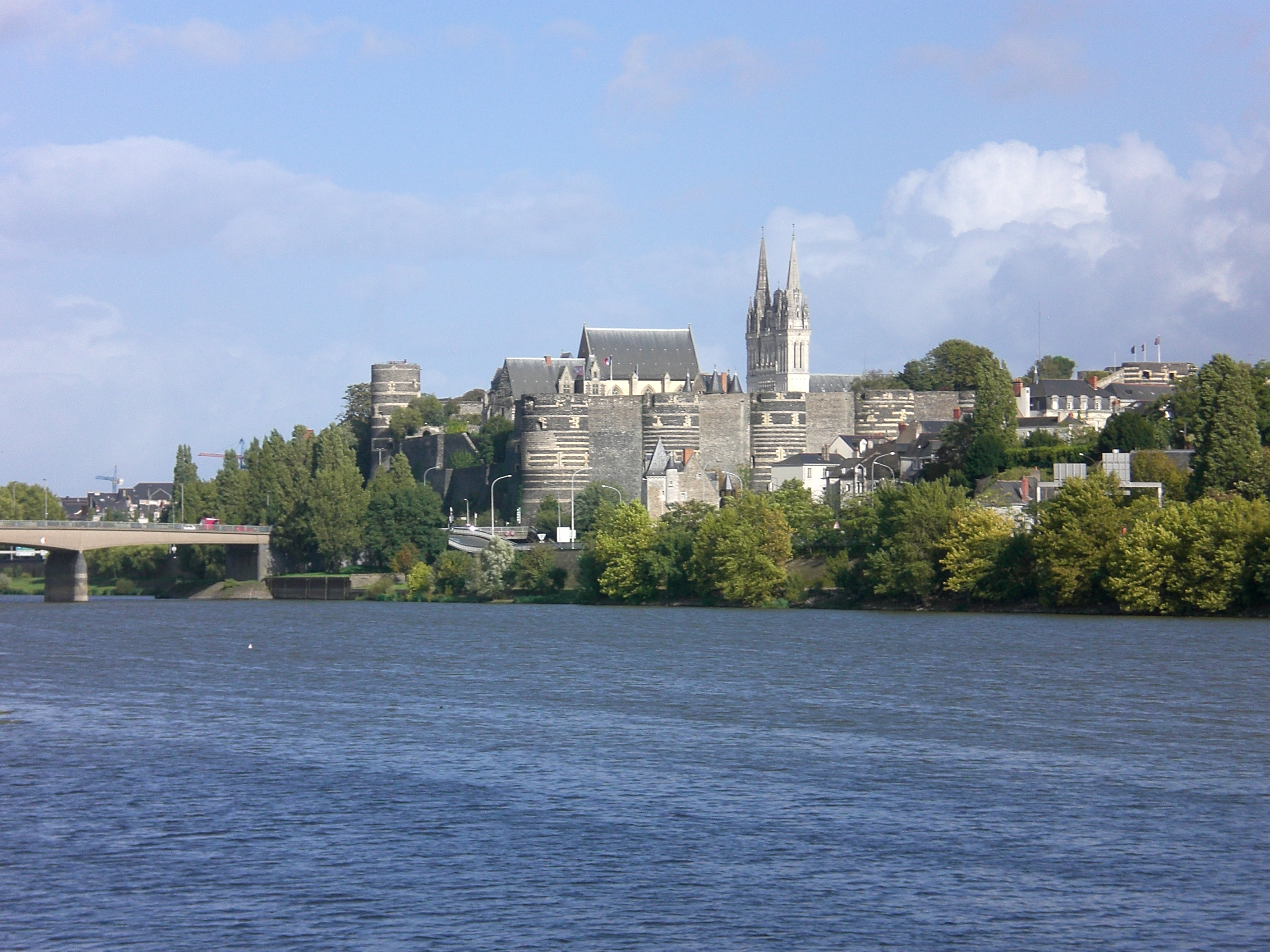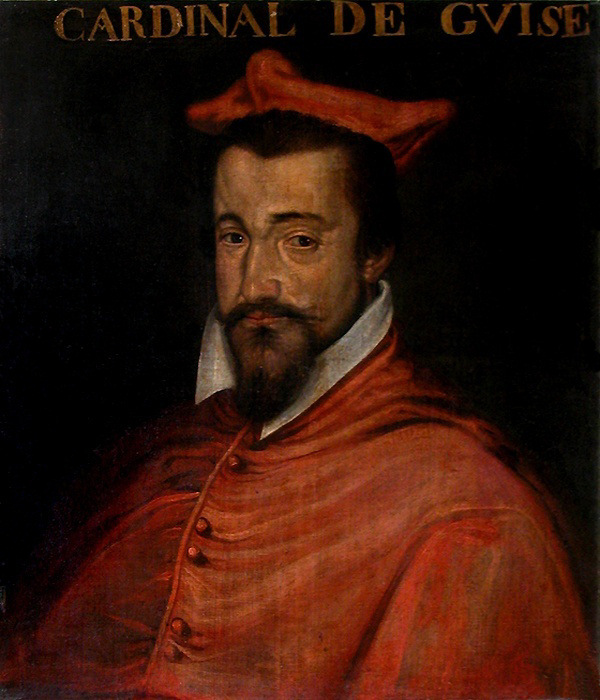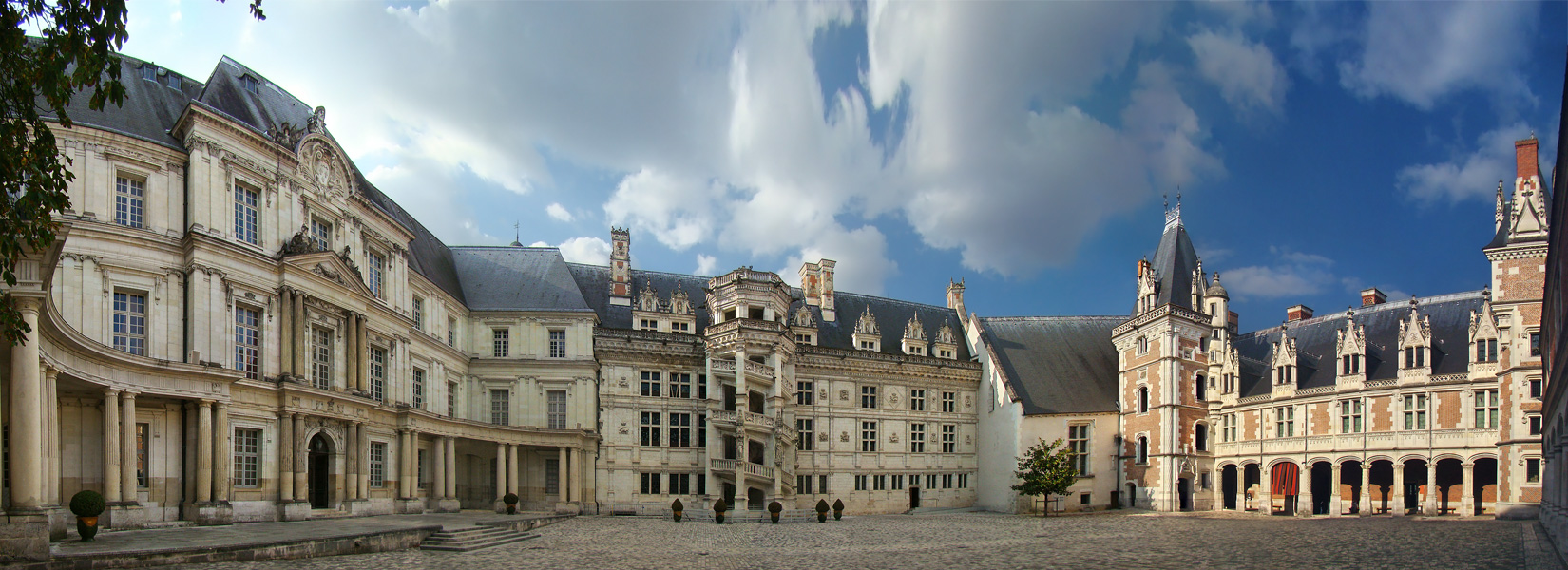|
Jean VI D'Aumont
Jean VI d'Aumont (1522-1595) was a soldier and Marshal of France. He served as Marshal under Henri III, campaigning against the Protestants in 1585. He would not however conduct the campaign with much enthusiasm, and after clamour at court he would be replaced by Anne de Joyeuse He playing a key role in the Day of the Barricades and Assassination of the Duke of Guise (1588). Upon the assassination of Henri III in 1589, he would transfer his loyalties to the Protestant Navarre and would campaign for him in Burgundy, Maine and Brittany against the Duke of Mercœur. He was also granted the office of governor of Dauphiné, upon it being vacated in 1592. It would be whilst fighting in Brittany in 1595, that he would be killed. Early life and family Aumont was from an old noble family, which is recorded as far back as the thirteenth century. Reign of Henri III Campaigning In 1585 Aumont was granted command of an army by Henri and sent to campaign in Auvergne and Languedoc against the fo ... [...More Info...] [...Related Items...] OR: [Wikipedia] [Google] [Baidu] |
Marshal Of France
Marshal of France (french: Maréchal de France, plural ') is a French military distinction, rather than a military rank, that is awarded to generals for exceptional achievements. The title has been awarded since 1185, though briefly abolished (1793–1804) and for a period dormant (1870–1916). It was one of the Great Officers of the Crown of France during the and Bourbon Restoration, and one of the Grand Dignitaries of the Empire during the First French Empire (when the title was Marshal of the Empire, not Marshal of France). A Marshal of France displays seven stars on each shoulder strap. A marshal also receives a baton: a blue cylinder with stars, formerly fleurs-de-lis during the monarchy and eagles during the First French Empire. The baton bears the Latin inscription of ', which means "terror in war, ornament in peace". Between the end of the 16th century and the middle of the 19th century, six Marshals of France were given the even more exalted rank of Marshal General ... [...More Info...] [...Related Items...] OR: [Wikipedia] [Google] [Baidu] |
Languedoc
The Province of Languedoc (; , ; oc, Lengadòc ) is a former province of France. Most of its territory is now contained in the modern-day region of Occitanie in Southern France. Its capital city was Toulouse. It had an area of approximately 42,700 square kilometers (16,490 square miles). History The Roman province of Gallia Narbonensis fell to the Visigothic Kingdom from the 5th to the 8th centuries. Occupied briefly by the Emirate of Córdoba between 719 and 759, it was conquered and incorporated into the Kingdom of the Franks by Pippin the Short in 759 following the Siege of Narbonne. Under the Carolingians, the counts of Toulouse were appointed by the royal court. Later, this office became hereditary. Part of the territory where Occitan was spoken came to be called ''langue d'oc'', ''Lengadòc'' or Languedoc. In the 13th century, the spiritual beliefs of the area were challenged by the See of Rome and the region became attached to the Kingdom of France following the ... [...More Info...] [...Related Items...] OR: [Wikipedia] [Google] [Baidu] |
Henri, Duke Of Montpensier
Henri de Bourbon, Duke of Montpensier, (12 May 1573 – 27 February 1608) was Dauphin of Auvergne, Duke of Montpensier, Sovereign Prince of the Dombes and Lord of Châtellerault. Henri was born at Mézières, the son of François de Bourbon, Duke of Montpensier, and of his wife Renée d'Anjou, ''marquise de Mézières''. On 15 May 1597, Henri married Henriette Catherine, daughter of Henri de Joyeuse and Catherine de Nogaret. They had: * Marie de Bourbon, Duchess of Montpensier (15 October 1605 – 4 June 1627); married Gaston, Duke of Orléans and was the mother of ''La Grande Mademoiselle LA most frequently refers to Los Angeles, the second largest city in the United States. La, LA, or L.A. may also refer to: Arts and entertainment Music * La (musical note), or A, the sixth note * "L.A.", a song by Elliott Smith on ''Figur ...'' (with Marie dying as a result of complications from the birth of her daughter). Her daughter never married and died childless in 1693 and ... [...More Info...] [...Related Items...] OR: [Wikipedia] [Google] [Baidu] |
Mâcon
Mâcon (), historically anglicised as Mascon, is a city in east-central France. It is the prefecture of the department of Saône-et-Loire in Bourgogne-Franche-Comté. Mâcon is home to near 34,000 residents, who are referred to in French as Mâconnais. The city gave its name to the nearby vineyards and wine 'appellation'. Geography The city lies on the western bank of the river Saône, between Bresse in the east and the Beaujolais hills in the south. Mâcon is the southernmost city in the department of Saône-et-Loire and the region of Bourgogne-Franche-Comté. It is north of Lyon and from Paris. The climate is temperate with a slight continental tendency. Climate Mâcon features an oceanic climate (Köppen: ''Cfb''), with warm summers, slightly too cool to be called humid subtropical (''Cfa''). Winters are relatively cold to French standards, but milder and more rainy than north of Mâcon. Most precipitation is in spring and autumn. History Ancient and Medieval eras The ... [...More Info...] [...Related Items...] OR: [Wikipedia] [Google] [Baidu] |
Auxerre
Auxerre ( , ) is the capital of the Yonne department and the fourth-largest city in Burgundy. Auxerre's population today is about 35,000; the urban area (''aire d'attraction'') comprises roughly 113,000 inhabitants. Residents of Auxerre are referred to as ''Auxerrois''. Auxerre is a commercial and industrial centre, with industries including food production, woodworking and batteries. It is also noted for its production of Burgundy wine, including Chablis. In 1995 Auxerre was named "Town of Art and History". Geography Auxerre lies on the river Yonne and the Canal du Nivernais, about 150 km southeast of Paris and 120 km northwest of Dijon. The A6 autoroute (Paris–Lyon) passes northeast of the city. Auxerre-Saint-Gervais station has rail connections to Dijon, Paris, Corbigny and Avallon. History Auxerre was a flourishing Gallo-Roman centre, then called Autissiodorum, through which passed one of the main roads of the area, the Via Agrippa (1st century AD) which ... [...More Info...] [...Related Items...] OR: [Wikipedia] [Google] [Baidu] |
Compiègne
Compiègne (; pcd, Compiène) is a commune in the Oise department in northern France. It is located on the river Oise. Its inhabitants are called ''Compiégnois''. Administration Compiègne is the seat of two cantons: * Compiègne-1 (with 19 communes and part of Compiègne) * Compiègne-2 (with 16 communes and part of Compiègne) History by year : 665 - Saint Wilfrid was consecrated Bishop of York. Wilfrid refused to be consecrated in Northumbria at the hands of Anglo-Saxon bishops. Deusdedit, Archbishop of Canterbury, had died, and as there were no other bishops in Britain whom Wilfrid considered to have been validly consecrated, he travelled to Compiègne, to be consecrated by Agilbert, the Bishop of Paris. : 833 - Louis the Pious (also known as King Louis I, the Debonair) was deposed in Compiègne. : February 888 - Odo, Count of Paris and king of the Franks was crowned in Compiègne. : 23 May 1430 - During the Hundred Years' War, Joan of Arc was captured by the Burgund ... [...More Info...] [...Related Items...] OR: [Wikipedia] [Google] [Baidu] |
Angers
Angers (, , ) is a city in western France, about southwest of Paris. It is the prefecture of the Maine-et-Loire department and was the capital of the province of Anjou until the French Revolution. The inhabitants of both the city and the province are called ''Angevins'' or, more rarely, ''Angeriens''. Angers proper covers and has a population of 154,508 inhabitants, while around 432,900 live in its metropolitan area (''aire d'attraction''). The Angers Loire Métropole is made up of 29 communes covering with 299,500 inhabitants (2018).Comparateur de territoire INSEE Not including the broader metropolitan area, Angers is the third most populous |
Le Mans
Le Mans (, ) is a city in northwestern France on the Sarthe River where it meets the Huisne. Traditionally the capital of the province of Maine, it is now the capital of the Sarthe department and the seat of the Roman Catholic diocese of Le Mans. Le Mans is a part of the Pays de la Loire region. Its inhabitants are called ''Manceaux'' (male) and ''Mancelles'' (female). Since 1923, the city has hosted the 24 Hours of Le Mans, the world's oldest active endurance sports car race. History First mentioned by Claudius Ptolemy, the Roman city ''Vindinium'' was the capital of the Aulerci, a sub tribe of the Aedui. Le Mans is also known as ''Civitas Cenomanorum'' (City of the Cenomani), or ''Cenomanus''. Their city, seized by the Romans in 47 BC, was within the ancient Roman province of Gallia Lugdunensis. A 3rd-century amphitheatre is still visible. The ''thermae'' were demolished during the crisis of the third century when workers were mobilized to build the city's defensive walls ... [...More Info...] [...Related Items...] OR: [Wikipedia] [Google] [Baidu] |
Tours
Tours ( , ) is one of the largest cities in the region of Centre-Val de Loire, France. It is the Prefectures in France, prefecture of the Departments of France, department of Indre-et-Loire. The Communes of France, commune of Tours had 136,463 inhabitants as of 2018 while the population of the whole functional area (France), metropolitan area was 516,973. Tours sits on the lower reaches of the Loire, between Orléans and the Atlantic Ocean, Atlantic coast. Formerly named Caesarodunum by its founder, Roman Augustus, Emperor Augustus, it possesses one of the largest amphitheaters of the Roman Empire, the Tours Amphitheatre. Known for the Battle of Tours in 732 AD, it is a National Sanctuary with connections to the Merovingian dynasty, Merovingians and the Carolingian dynasty, Carolingians, with the Capetian dynasty, Capetians making the kingdom's currency the Livre tournois. Martin of Tours, Saint Martin, Gregory of Tours and Alcuin were all from Tours. Tours was once part of Tour ... [...More Info...] [...Related Items...] OR: [Wikipedia] [Google] [Baidu] |
Louis II, Cardinal Of Guise
Louis II, Cardinal of Guise (6 July 1555, Dampierre – 24 December 1588, Château de Blois), was the third son of Francis, Duke of Guise, and Anna d'Este. Life He was elected archbishop of Reims in 1574, succeeding his uncle, Charles of Guise. On 21 February 1578, he was created cardinal; he took the title of Cardinal of Guise, succeeding his uncle, Louis I, Cardinal of Guise. He was later named papal legate to Avignon, and made by Henry III of France a knight of the Order of Saint Esprit. His dedication to the cause of his brother Henry I, Duke of Guise, and intransigence to the royal power provoked the hostility of Henry III. At the royal command, the Cardinal was assassinated at the Château de Blois by the King's bodyguard known as "the Forty-five", the day after his brother. Louis had an illegitimate son: * Louis ''bâtard de Guise'' (1588–1631), born of his ''liaison'' with Aimerie de Lescheraine, ''dame de Grimaucourt'', was legitimised in 1610, after his fathe ... [...More Info...] [...Related Items...] OR: [Wikipedia] [Google] [Baidu] |
La Noue
La Noue () is a commune in the Marne department in the Grand Est region in north-eastern France. See also *Communes of the Marne department The following is a list of the 613 communes in the French department of Marne. The communes cooperate in the following intercommunalities (as of 2020):Noue {{Marne-geo-stub ... [...More Info...] [...Related Items...] OR: [Wikipedia] [Google] [Baidu] |
Blois
Blois ( ; ) is a commune and the capital city of Loir-et-Cher department, in Centre-Val de Loire, France, on the banks of the lower Loire river between Orléans and Tours. With 45,898 inhabitants by 2019, Blois is the most populated city of the department, and the 4th of the region. Historically, the city was the capital of the county of Blois, created on 832 until its integration into the Royal domain in 1498, when Count Louis II of Orléans became King Louis XII of France. During the Renaissance, Blois was the official residence of the King of France. History Pre-history Since 2013, excavations have been conducted by French National Institute of Preventive Archaeological Research (''INRAP'' in French) in Vienne where they found evidence of "one or several camps of late Prehistory hunter-gatherers, who were also fishermen since fishing traps were found there.. ..They were ancestors of the famous Neolithic farmer-herders, who were present in current France around 6,000 BC ... [...More Info...] [...Related Items...] OR: [Wikipedia] [Google] [Baidu] |






